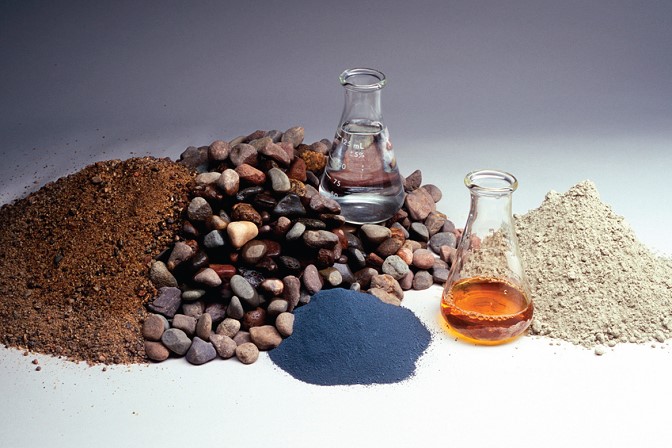Posted on November 03, 2022
Just how many tires get discarded every year? More than a billion globally; about 300 million in the United States. Recycling this many tires is an ongoing logistical challenge.
On top of that, there’s a backlog of tires that have piled up over the years. The EPA estimates that there are 2-3 billion old tires across the country. Fires are a threat, and standing water in the tires is the perfect breeding ground for mosquitoes. About 40 of 50 states now ban tires from landfills. Illegal dumping leads to fines and, potentially, incarceration.
The typical tire on a passenger vehicle weighs roughly 20 pounds. The average truck tire weighs triple that. An 18-wheeler travels about on tires weighing 100 pounds or more. Tires on the largest mining trucks are more than five feet wide and 14 feet in diameter. They weigh more than six tons each!
The bigger and more valuable the tire, the more likely it is to get recycled through retreading. Every year, about a third of America’s worn tires get retreaded. In fact, the tires on long-haul semis may get new tread as many as three times. Retreading helps the environment. According to the EPA, a semi-truck tire requires 22 gallons of oil to fabricate. Retreading only requires seven.
Multiply those figures by a billion, and that’s a lot of rubber.
Recycling Methods
Tire recycling processes take worn out tires and turn them into something useful. Shredding a tire reduces its volume to about a fourth of the original. The resulting rubber crumb gets used in a variety of ways, including in the concrete industry.
The Dual Drive Crackermill produces finely ground rubber using a dual roller approach. Variable speed corrugated drums increase the friction ratio to speed shredding. When desired, micromill wet grinding reduces sizes further. Finer CRM grades deliver enhanced dispersion and reaction rates, but they cost more.
Molectra’s process is a multi-step method for breaking down tires. First, the two steel beads get removed from the tire trim. Second, the tire is sliced into pieces. They get treated chemically to soften them and to remove contaminants. Third, a series of rollers separate the corded fibers and steel wires. Finally, the softened rubber gets granulated. It's possible to produce various sizes from fine powder to pea-sized particles. Heat is applied to the rubber particles to extract the softening chemicals.
There’s also a cryogenic process that uses liquid nitrogen to freeze shredded tire strips to about -112 degrees F. The brittle rubber passes through pinch rollers that shatter rubber surfaces while leaving the strips intact. Cryogenic processing readily separates the rubber from the steel wires and textile cords. This process is more costly, but it yields clean, small particles. The other components are easily recycled as well.
By contrast, pyrolysis destroys shredded tire pieces in a reduced oxygen environment heated to about 800 degrees F. The process yields tire-derived fuel (TDF), char, and synthetic gas. The TDF is a fuel appropriate for use in heating cement kilns.
Uses for Tires in the Concrete Industry
Old tires benefit the concrete industry in various ways, including:
Alternate fuel
Aggregates and/or sand
Feedstock for graphene concrete additive
In turn, the concrete industry benefits the environment by reducing stocks of discarded tires.
Alternate Fuel
A 2022 report analyzes the tire-derived fuel (TDF) market. According to one analyst, the global TDF market will exceed $510 million by 2031, representing a CAGR of 2.9%. In the United States, there’s increased use of this high BTU-value fuel with reduced emissions.
One California cement plant uses whole tires and pistachio shells to fuel kilns. Others use tires shredded into pieces 1-3 inches long.
Aggregates
However, there is a problem using rubber as an aggregate. Rubber aggregates absorb too much moisture compared to natural aggregates. Now, Australian researchers suggest a solution. Compress wet concrete to remove much of the moisture. The use of a rubber aggregate yields a 20% increase in tensile strength and a 97% gain in compressive strength.
Rubber is also used as an aggregate layer in road beds. It provides thermal insulation that inhibits frost penetration, reducing frost heaves.
Graphene concrete
Thanks to University of Houston researchers, old tires are now a source for graphene oxide. Flash heating of rubber tire waste yields the desired results. Ready mix plants can add a small amount of graphene oxide to produce graphene concrete.
Crumb rubber replaces sand
In a "lab to slab" study, University of South Australia researchers deployed rubber tires ground to the consistency of sand. The fine crumb rubber replaces up to one-fifth of the sand used in ready-mix concrete. Rubber-reinforced concrete offers a host of advantages. Workability is equal to or slightly better than traditional concrete. It is more ductile, making it more impact resistant. It also delivers enhanced thermal and acoustic insulation, and it is tougher and more resilient.
Rubberized asphalt concrete (RAC)
Rubberized asphalt concrete (RAC) is a formulation that’s been around for more than 50 years. RAC delivers a durable, skid-resistant surface. It contains ground tire rubber, conventional aggregates, and a binder. The cushioning effect of the rubber reduces road noise by up to five decibels. Every paved mile keeps thousands of tires out of landfills.
About PACA
The Pennsylvania Aggregates and Concrete Association (PACA) is your source for the latest industry news. Our team welcomes any question you may have about an upcoming concrete project. Please contact us at your convenience.

